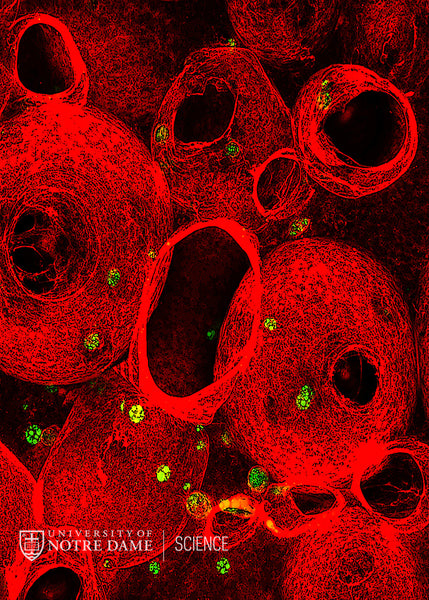




Mitra Aliabouzar, Ph.D., Postdoctoral Fellow (Fabiilli Laboratory), Department of Radiology, University of Michigan Medical School
Strategies for delivery of therapeutic drugs to targeted areas of the body (e.g., to kill a tumor or to encourage local blood vessel growth) often involve gel-based encapsulation agents that passively and slowly release the drug, which degrades over time. Under such conditions, the local rate of drug delivery is controlled by the initial concentration of drug and the characteristics of the encapsulating material. In some cases, however, more control over delivery of the drug would be valuable. One approach to achieve this is the application of ultrasound. Scaffolds made of materials like fibrin (red) can be doped with sound-responsive emulsions loaded with a desired drug. When ultrasound is applied, the drug is released. In this image, liquid droplets containing a fluorescent dextran dye (green) have been vaporized into bubbles by the ultrasound. This process, called acoustic droplet vaporization, is being used to noninvasively control the release of payloads of drugs in a spatially and temporally controlled manner.
20-013
